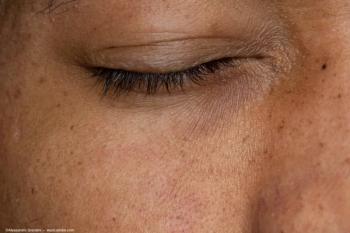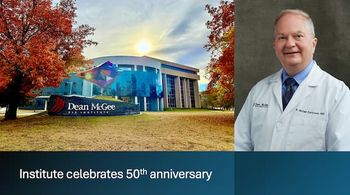
Q&A: The ELEVATUM Study with J. Fernando Arevalo
Key Takeaways
- ELEVATUM study assessed faricimab's effectiveness in diabetic macular edema among underrepresented minorities, focusing on US data from 124 patients.
- Participants received monthly faricimab injections for six months, then every eight weeks until week 56, with primary endpoint being visual acuity improvement.
The ELEVATUM study explored faricimab's effectiveness in treating diabetic macular edema among underrepresented minorities, showcasing significant visual acuity improvements.
Johns Hopkins researcher J. Fernando Arevalo, MD, PhD, FACS, FASRS, presents ELEVATUM, a pioneering multicountry study examining faricimab's effectiveness in treating
Note: The following conversation has been lightly edited for clarity.
Ophthalmology Times: At the Retina World Congress 2025 meeting, you spoke about the ELEVATUM study. Can you speak to the design of this study?
J. Fernando Arevalo, MD, PhD, FACS, FASRS: ELEVATUM is a study on underrepresented minorities treated with faricimab for diabetic macular edema.
It is a multi-country study. Patients were enrolled in the US, India, and Kenya. Here, I'm going to be presenting only the US data. 124 patients in 40 centers. These are patients that are 18 years old or older, that have diabetes type 1 or type 2 with the diabetic macular edema. These are treatment naive diabetic macular edema with a visual acuity 2040, to 2400. Patients, again have to have diabetes that has hemoglobin a1c up to 10%, but we included up to 20% of patients that could have hemoglobin a1c up to 12% to increase the enrollment of patients, typical of these underrepresented minorities.
Patients had to be self-identified as African American patients or Hispanic, Latin American, but also Native Americans, Alaska Natives and other minority populations. Patients were included in a study that was a open-label that included injections of faricimab, injections every month for 6 months, and then injections every 8 weeks until week 56. And the primary endpoint of the study was the measurement of visual acuity week 56 compared to visual acuity at baseline. Secondary endpoints included central field thickness, also the improvement in diabetic retinopathy score and also safety.
OT: What were some of the results or takeaways from the ELEVATUM study?
Arevalo: Baseline characteristics demonstrated that patients in ELEVATUM had a higher proportion of patients that had hemoglobin a1c that was higher than in other studies such as YOSEMITE and RHINE, and higher proportion of patients that were African American or Hispanic, Latino patients. Also demonstrated that patients that were Hispanic or Latino patients had worse disease than African American patients with worse visual acuity, worse central subfield thickness and also the hemoglobin a1c was similar in all groups, similar to what was seen in YOSEMITE And RHINE. But the better retinopathy score was worse in patients that were from Latino population.
However, we found that all of the groups, African American patients, Latino patients, and the overall population of the study did improve in terms of visual acuity significantly, and central subfield thickness compared to and consistent with what we saw in YOSEMITE and RHINE.
The drug demonstrated in this population to be very safe with very little inflammation. Only 2.4% of cases had very mild inflammation. There were no cases of retinal occlusive vasculitis or retinal venoclusions. And in summary, in this underrepresented population with diabetic macular edema, first, we demonstrated that they can be recruited to randomize clinical trial, and they can improve significantly visual acuity and centers subfield thickness in a study that is randomized and controlled. It also demonstrated patients that are from Latin America ancestors, those patients have worse disease, but also had the best improvement in terms of visual acuity centers subfield thickness. And finally, the drug demonstrated to be very safe, which was consistent with YOSEMITE and RHINE studies.
Newsletter
Don’t miss out—get Ophthalmology Times updates on the latest clinical advancements and expert interviews, straight to your inbox.


















































.png)


